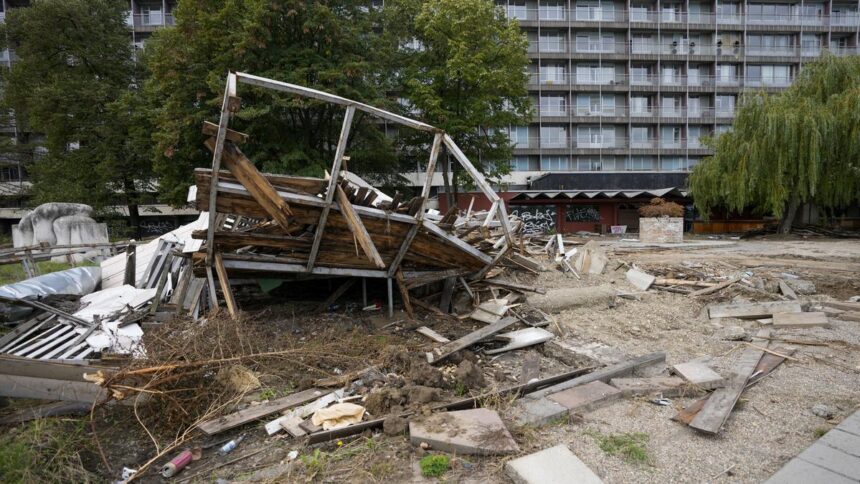
A view of Hotel Yugoslavia, once a symbol of progress in the former socialist country of Yugoslavia that broke up in the 1990s and a favorite gathering place for locals as well as world leaders, in Belgrade, Serbia, Thursday, October 3, 2024. | Photo Credit: AP
Belgrade’s iconic Hotel Yugoslavia, once a symbol of progress in the former socialist country of Yugoslavia that broke up in the 1990s and a favorite gathering spot for locals and world leaders alike, now lies eerily quiet awaiting possible demolition.
The once bustling landmark – a prime example of modernist architecture when it was built in the 1960s – has fallen into disrepair, with its future shrouded in debate over its historical significance and the push for further development.
The white facade, once polished and welcoming, is marred by crumbling concrete and graffiti. Inside, debris litters the clean red carpet floor, while scattered pieces of furniture reveal the luxury that once filled the rooms and lobby: Faded velvet chairs, torn mattresses, sagging curtains and broken windows, all that remains of luxury . once. The wood-paneled presidential suite where high-ranking officials would stay is now home to pigeons flying through broken glass.
As the capital of Serbia grapples with the noisy growth and new high-rises that dot its skyline, the almost certain fate of the hotel has sparked controversy, with some seeing it as a relic worth preserving and others envisioning new possibilities rising from its ruins.
In its heyday after welcoming its first guests in 1969, this five-star hotel featured one of the world’s largest chandeliers made of 40,000 Swarovski crystals and 5,000 light bulbs.
The guest list included Queen Elizabeth II, United States Presidents Richard Nixon and Jimmy Carter, astronauts including Neil Armstrong, and the royals of Belgium and the Netherlands.
The hotel, with stunning views of the Danube River in the capital’s New Belgrade district, was damaged by NATO bombing in 1999 as an armed intervention against Serbia’s bloody offensive against Kosovo Albanian separatists.
Only part of the hotel was fully renovated, and it remained open to guests until a few months ago, when private investors announced plans to demolish the structure and build a new one in its place. Two 150-meter (500-foot) high towers containing a luxury hotel, offices and private apartments will be built, according to the new owner.
Asked why the landmark hotel had to be completely demolished instead of being incorporated into a new project, Zivorad Vasic, a spokesman for the investors, said there were several reasons.
“One was when the bombing in 1999, quite a lot of parts of the hotel were destroyed. Second, the hospitality industry ended and changed tremendously. If you look at the hotel now and how they looked before, they are completely different,” he said. .
Architect and tour guide Matija Zlatanovic, who often takes tourists to the hotel to explain its rich history, said the new hotel plan is “quite controversial,” especially because “there are concerns about the size of the building that will be erected here.”
“It follows the style of towerization of Belgrade and the construction of enormous heights up all over,” he said. “And we have yet to see the impact they’re going to have on this neighborhood.”
Neighbors facing life in the shadow of the future planned skyscraper are not happy. Some staged weekly protests against the new project, saying they would stop the demolition with their bodies if necessary.
Svetlana Gojun, one of the protesters, said Hotel Yugoslavia “represents a large part of our history”.
“Half the world comes to this hotel, from actors, musicians, politicians, writers,” he said. “Everything is tied to this hotel. The whole world knows about it. And now we’re going to let something like that disappear?”
Published – 19 October 2024 13:53 IST




